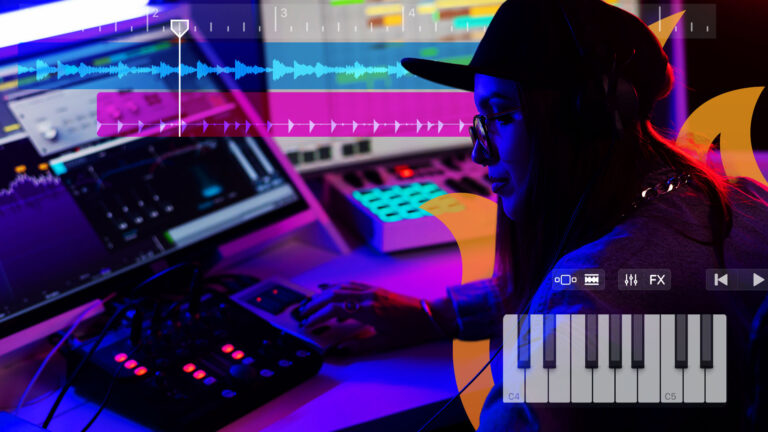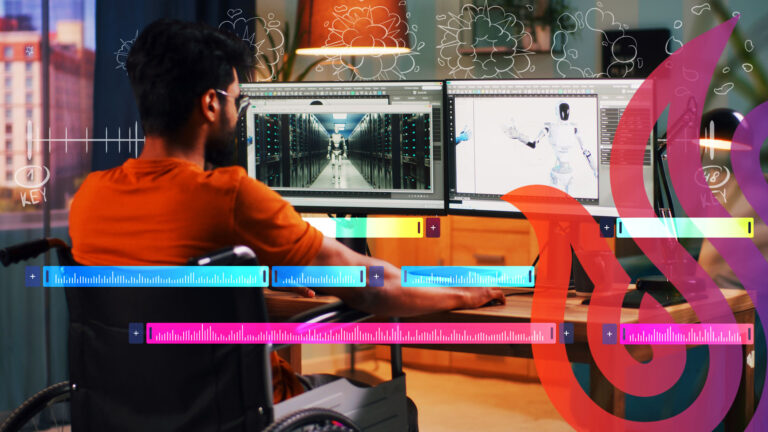Leonardo Da Vinci is credited with saying, “The first intention of the painter is to make a flat surface display a body as if modeled and separated from this plane”. Dimensionality became the supreme innovation of Renaissance art then and continues to drive innovation through digital displays of all sizes today.

For a recent example, Amazon’s shopping app can now place 3D models of products from their catalog into an augmented reality space using the camera of the user’s smartphone. Whether the application of such perspective views describes a scene, a character, or streams of raw data, generating images in three dimensions requires students to become aware of their own surroundings in new ways.
Many USV students are required to take a traditional sketching course that challenges them to render 3D objects onto flat surfaces. Whether they go on to code game engines or rig characters, their first experience with visualizing 3D space takes place with charcoal in their hands.
They are in very good hands as well. Veteran USV professor Jim Smyth means it when he tells his sketching class, “If you don’t like the way the world looks, change your position!” Even as he explains the mathematics behind vanishing points or he measures the length of a line at a distance in perspective, he tells students, “No studio is going to pay you to do all that.” He then stands in front of the class and points to the ceiling. “See how all the ceiling tiles line up to your line of sight? See how, if you move to the side, all the lines in the ceiling move along with you at the same time? They attach to your eye point.” He watches as his students rock back in forth, exploring how the world moves in relation to their changed point of view. He has them note the lines in the ceiling, on the floor, along with the walls and other dimensions of the room. Then he describes how to approximate the process through observation. “99% of the time you won’t need the accuracy that you get through measurement. What you need is consistency”.
Drawing from the imagination takes on new meaning for students who take Jim’s classes. Elements of a scene can be broken apart and examined with fresh eyes, in a way that invites experimentation and freedom to play with alternatives, to improvise. When raw video of a class session was posted on Facebook, a commenter chimed, “I remember learning perspective from Jim!” Without question, his lessons are hard to forget.
 “Really what you need to do, when you are looking at an object, a real object in the real world (not from your imagination), you have to figure out how high above that object are you, or how high is that object above you.” He then draws a simple trapezoid with elongated edge lines that converge to a vanishing point. By rotating his drawing in front of the class, he demonstrates how the same sketch that represents floor tiles can be flipped to represent a ceiling or turned on its side to illustrate a wall alongside a corridor.
“Really what you need to do, when you are looking at an object, a real object in the real world (not from your imagination), you have to figure out how high above that object are you, or how high is that object above you.” He then draws a simple trapezoid with elongated edge lines that converge to a vanishing point. By rotating his drawing in front of the class, he demonstrates how the same sketch that represents floor tiles can be flipped to represent a ceiling or turned on its side to illustrate a wall alongside a corridor.
To make his point even more clear, Jim picks up a spool of brightly colored string which has been fastened at one end to an easel. As the string unwinds, Jim illustrates the line of sight that it represents and plays with how the perspective changes as he moves his end of the string up over his head or to the sides. “See how all parallel lines converge to a point!”
While some of his students may not appreciate it fully at first, he is well aware that they are being introduced to the geometry that surrounds them in all they do. Through such practical experiences, students are introduced to yet another method they can use to break things into pieces in order to arrange them in new ways.


